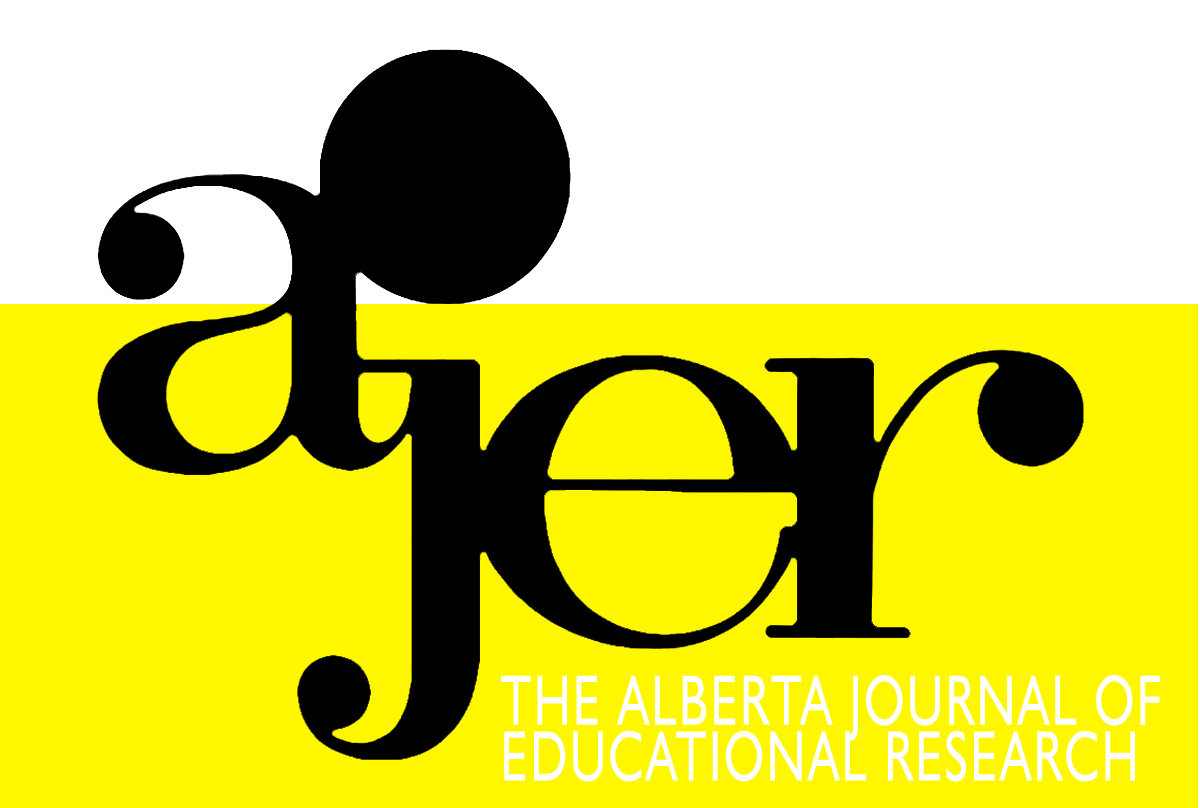Conceptualizations of Student Wellness in Alberta Public School Results Reports
DOI:
https://doi.org/10.55016/ojs/ajer.v69i3.75817Abstract
As concern for student wellness permeates into educational objectives, educators require high-quality tools to better understand wellness. A content analysis of a representative sample of the Annual Education Results Reports from Alberta public school divisions revealed patterns in the framing of student wellness through the five wellness domains outlined in the Alberta K–12 Student Wellness Framework (Alberta Education, 2009). Three key discoveries were highlighted: Most wellness language focused on emotional and social wellness, physical wellness was underrepresented, and ambiguity characterized a significant portion of wellness mentions. We applied a Strengths, Weaknesses, Opportunities, and Threats (SWOT) analysis to our results, which revealed opportunities for improvement regarding how educators speak about, address, and measure issues of student wellness. Creating a new assurance category for student wellness arose as a significant opportunity.
Keywords: student wellness, Alberta Education Results Reports, wellness domains, content analysis, wellness framework, SWOT analysis
La préoccupation pour le bienêtre des élèves s’infiltrant dans les objectifs éducatifs, les éducateurs ont besoin d'outils de qualité pour mieux comprendre le bienêtre. Une analyse du contenu d'un échantillon représentatif des rapports annuels sur les résultats en éducation des autorités scolaires publiques de l'Alberta a révélé des tendances dans le cadrage du bienêtre des élèves à travers les cinq domaines du bienêtre décrits dans le cadre du bienêtre des élèves de la maternelle à la 12e année de l'Alberta (Alberta Education, 2009). Trois découvertes clés ont été mises en évidence : La plupart des termes relatifs au bienêtre sont axés sur le bienêtre émotionnel et social, le bienêtre physique est sous-représenté et l'ambiguïté caractérise une grande partie des mentions relatives au bienêtre. Nous avons appliqué une analyse des forces, faiblesses, opportunités et menaces (FFOM) à nos résultats, qui a révélé des possibilités d'amélioration dans la façon dont les éducateurs parlent, abordent et mesurent les questions relatives au bienêtre des élèves. La création d'une nouvelle catégorie d'assurance de la qualité pour le bienêtre des élèves est apparue comme une possibilité importante.
Mots clés : bienêtre des élèves, rapports annuels sur les résultats en éducation en Alberta, domaines du bienêtre, analyse du contenu, cadre du bienêtre, analyse FFOM
Downloads
Downloads
Published
How to Cite
Issue
Section
License
UNIVERSITY OF ALBERTA COPYRIGHT LICENSE AND PUBLICATION AGREEMENT
If accepted, authors will be asked to sign a copyright agreement with the following points:
A. Where there is any inconsistency between this Copyright License and Publication Agreement and any other document or agreement in relation to the same subject matter, the terms of this Agreement shall govern.
B. This document sets out the rights you are granting in relation to publication of your article, book review, or research note entitled (the “Article”) through inclusion in the academic journal titled Alberta Journal of Educational Research (the “Journal”) published through the Faculty of Education, representing the Governors of the University of Alberta (the “Journal Editor”).
C. There will be no payment to you for this publication and grant of rights. In consideration of the agreement to publish the Article in the Journal:
1. You are warranting that:
- the content of the Article is your original work, and its content does not contain any material infringing the copyright of others; or, where the Article is not entirely your original work, you have obtained all necessary permissions in writing to grant the rights you are giving in this agreement;
- the content of the Article does not contain any material that is defamatory of, or violates the privacy rights of, or discloses the confidential information of, any other person;
- the Article has not been published elsewhere in whole or in part, and you will not allow publication of the Article elsewhere without the consent of the Journal Editor;
- the names of all co-authors and contributors to the Article are:
2. You agree to license the copyright in the Article to the Journal Editor, on a worldwide, perpetual, royalty free basis; and to the extent required by the terms of this agreement. You shall retain the right at all times to be acknowledged as the/an author of the Article.
3. You further agree that the Journal Editor has the entitlement to deal with the Article as the Journal Editor sees fit, and including in the following manner;
- The right to print, publish, market, communicate and distribute the Article and the Journal, in this and any subsequent editions, in all media (including electronic media), in all languages, and in all territories, ing the full term of copyright, and including any form of the Article separated from the Journal, such as in a database, abstract, offprint, translation or otherwise, and to authorize third parties to do so;
- The right to register copyright of the Journal;
- The right to edit the Article, to conform to editorial policy as the Journal Editor sees fit.
4. If any co-author or contributor to the Article does not sign this agreement, the Journal Editor reserves the right to refuse to publish the Article.



